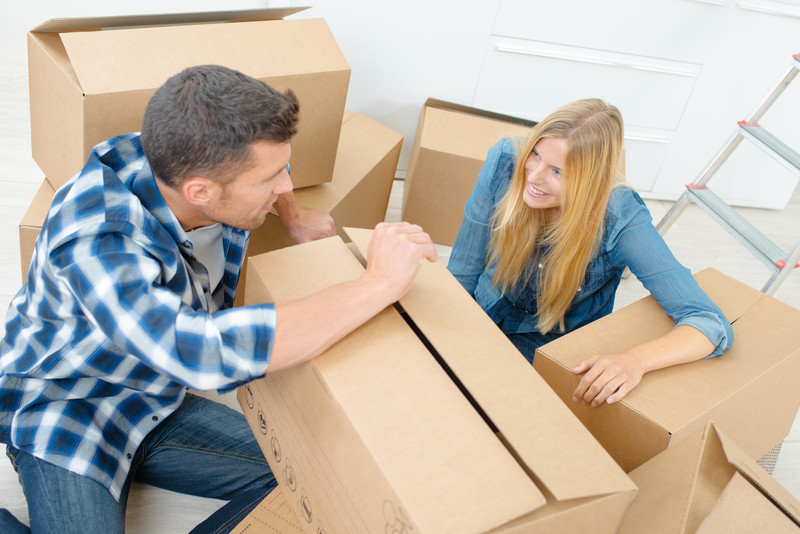Packing is one of the strenuous aspects of moving. The first brilliant step when looking to pack for a move is to gather all the supplies needed and then tackle it room by room until completion.
You certainly need to know how to pack for relocation regardless of the distance of your move, whether local, out of state or international; else, your valuables might get damaged.
Packing Checklist – Room-by-Room
Begin by making a list of the belongings you plan to move. Do this for each room as it will ensure proper organization and accountability of your valuable items.
Then proceed by collecting moving supplies such as moving boxes, blankets, packing tape, and other essential materials needed to secure your belongings all through the move.
Endeavor to combine your items based on function, such as kitchen supplies when packing. Finally, remember to mark your moving boxes for easy identification of contents when you reach your destination home.
You can inscribe the name, contents as well as the nature of the contents whether fragile or not on the top and sides of the boxes. For instance, you can label a box packed from the kitchen as kitchen/utensils/not fragile.
Below are packing checklist belongings for each room in a home:
The Bedrooms
- Casual clothing: Fold the clothes and place them in the boxes. You can buy wardrobe boxes for your formal wear as it will allow you to keep the clothes on a hanger all through the move.
- Organize jewelry: Store all your valuable items in a container and make sure it stays with you all through the moving process.
- Pack mattresses: Make sure they are kept in a secure bag to protect the mattress.
- Make sure all bedding and pillows remain clean: Keep these items in bags and make sure they don’t come in contact with dust. Store them in the labeled moving boxes.
- Pack up your home office: Keep important files in a safe or secured file box.
The Dining Room
- Roll up your rug: Tie with a rope or secure it in a plastic.
- Pack chairs: Remove and place the legs in moving boxes with the casters/nails stored in a labeled plastic bag.
- Secure kitchen table: This can be done by using a blanket to wrap the table and placing it in a secure area where it can’t slide around.
- Pack decors: This can be done by using Bubble wrap or paper to wrap fragile items that can break, such as glass, pictures, lamps, artwork, and so on.
The Bathroom
- Pack toiletries in one place: Make sure they are easily accessible for you when you get to your new home. The bathroom items might be the first thing you unpack when you get to your new home.
- Organize towels: Make sure you pack soap, towels, toilet papers, and so on in a single place for each room you have in your destination home.
The Kitchen
- Defrost your refrigerator: This should be done at least two days before the move.
- Arrange dishes: There is nothing complicated in packing dishes for relocation contrary to popular belief. Just be careful when packing and wrapping them in bubble wraps. Also, make sure you don’t over-pack moving boxes as it will make it hard to move the boxes around, and any damage to one could lead to damage to a group of plates.
- Section boxes are perfect for your glasses: This provides you with a safe and straightforward way to transport your fragile glass items.
- Pack up small appliances: Begin this process by getting rid of any loose components or blades. Use packing tape to tape the cord and any additional parts around the appliance and make sure you add the user guide.
- Pack up dry items: Use bubble wrap or paper tape to wrap seasonings and make sure jars filled with foods or spices are packed on the bottom to avoid sliding or shifting while on the move. Store up refrigerated items in coolers containing ice.
The Living Room and Den
- Secure electronics: Make sure you cover the screen of your TVs and Computers with a blanket and unscrew any base of your device. Use tape to hold the base and the screw to the TV from behind.
- Pack furniture: Load your furniture into the moving truck before you start loading moving boxes. All legs of chairs and couch should be removed to enable easy maneuvering when you get to the new home.
- Make sure electronic components are organized: Make sure the power cable, HDMI, remotes, as well as auxiliary audio cables, are taped to each electronic device.
- Carefully handle mirrors and artwork: These items are to be wrapped in bubble wrap or blankets.
- Get your coffee table ready for the relocation: Avoid scratching the floor by putting furniture sliders under the legs of your coffee table. Use a blanket to cover the top of the table to avoid scratching.
- Remove lampshades and bulbs from lamps: Store these items in moving boxes and make sure you cushion gently. Be sure to wrap any fragile lamp base in bubble wrap.
- Pack your CDs, books, and DVDs in separate moving boxes: Do not over-pack boxes as these items may break.
The Garage/Storage Shed
- Pack up your lawn furniture cushions: Keep these items in moving boxes or trash bags.
- Get rid of hazardous materials: Items like paint, weed killer, or fertilizer must be disposed of, as they are considered hazardous.
- Pack tools: Keep them in your tool chest. Wrap items like a hammer and saw in a blanket and keep in moving boxes.
- Drain the gas from the tanks of your items: Make sure the gas in your mower or grill is completely drained out before you transport them. You can also remove the tank from the items and drain them before transporting them.
- Deflate pool toys: Doing this will ensure easy packing into boxes.
- Move with your bike: Easily transport your bike by using a bike rack on your vehicle.
The Laundry Room
- Move appliances: Start by unplugging the washer and dryer. Then disconnect all parts with the washer hose and dryer vent inclusive. Next, use tape to hold the power cord to each appliance.
- Get rid of detergents and fabric softening products: These items are dangerous to haul.
- Use laundry baskets or hampers as relocation boxes: To have a smooth move, pack all socks, T-shirts, and so on in the hampers.
General Packing Tips for a House Move
Apart from the above, there are still some other tips that may be of help to you as you are packing for your move. These include:
- Decide on packing requirements: Determine the items you will pack by yourself and the one to leave for the pro parkers.
- Find packing supplies: Go for quality boxes and supplies that are specially designed for relocating houses.
- Purchase packing items: The majority of people run out of bubble wrap, tape, big zip-lock bags, marker pens, moving boxes, and other packing materials before they even complete the task. So it is advisable to buy more than enough supplies to avoid unplanned shopping trips.
- Pack clean: Instead of using newspaper for packing, use white paper sheets to avoid stains.
- Safeguard little items: Little items like nuts and screws in zip lock bags.
- Reinforce boxes: Make sure the top, bottom, and sides of each moving boxes are well taped.
- Design a system: Make sure you mark any packed moving boxes. Use a color-coding to specify the room that each packed boxes belong to. You can also label each box for each room.
- Label everything: Make sure moving boxes are labeled with the contents and not just only the destination room. This will come in handy, especially when you are looking for a particular item.
- List contents: Create another inventory list that contains the detail of each box and its contents.
Where to start?
Begin the process by first packing less-used items such as CDs, books, DVDs, and other belongings stored in the garage or roof space
- Work from one room to another: Pack one room before moving to another and make sure boxes for each room are kept in the same place.
- Balance weight: Heavy belongings are to be packed on the bottom of the moving boxes and lighter ones on top.
- Do not overload: The maximum weight of the items you pack must not exceed 20kg to enable easy lifting and reduce the risk of donation.
- Fill empty space: To reduce movement of the contents in a box; you can use tea towels, bubble wrap, fabric, paper, or clothing to fill moving boxes. This was also useful in preventing the moving cartons from collapsing.
- Close moving boxes properly: Avoid packing a moving box that has items sticking out on the top of one that won’t close. All your moving cartons should be closed and properly taped.
- Use the right box: Lighter belongings should be packed in larger moving boxes and bulky items in smaller moving boxes.
- Don’t be tempted: Do not pack other items inside drawers and cupboards. Furniture is not made to be relocated. Increasing weight could maximize the risk of damage as a result of movement while in transit.
- Plan your first night: Moving from one house to another can be a disturbing task, especially when you don’t involve professional movers. To enjoy your first day, you will need a night at your destination home. We advised that you pack a separate box and label it first night box, which will contain items such as towels, bed linen, toiletries, and a change of clothes for each household member.
FAQ about Best Packing Checklist for a Move
You need to commence the process of planning your relocation around 8 weeks out from the date of your move-in, start packing around 14 to 21 days before you move in and be done in a few days to one week in advance.
Clear your freezer, pantry, and fridge of all open foods you know it is impossible to finish by the end of the week. Compile vital documents and valuables – plan to move with any passports, social security cards, wills, and other vital documents with you in a well-labeled folder.
It may take roughly three to five days to pack home with 3-bedroom. Remember that this is more than working for 1 or 2 hours in the night, it is exactly like dedicating three to five days of your entire life, taking breaks, and sleeps in the process.
Weekdays starting from Monday through Thursday are the best. When choosing a date to move, the best is to go for a weekday. Moving companies like Allied Van Line suggest a move between Monday and Thursday when they don’t have much demand.
Yes, movers will take apart and couple your furniture. There are household items such as bed frames that will need to be disassembled to safely relocate them. Vanities, large dining room tables, bed frames, dressers with mirrors are some of the famous items to be taken apart.
Final Words
We hope you now have all the help you needed when it comes to packing a house for a move from our packing tips. Always remember that our network of experienced packers is always available to bail you out if the task becomes huge than what you can handle. Additionally, there are many checklists on moving house in these packing tips for relocating a home.



